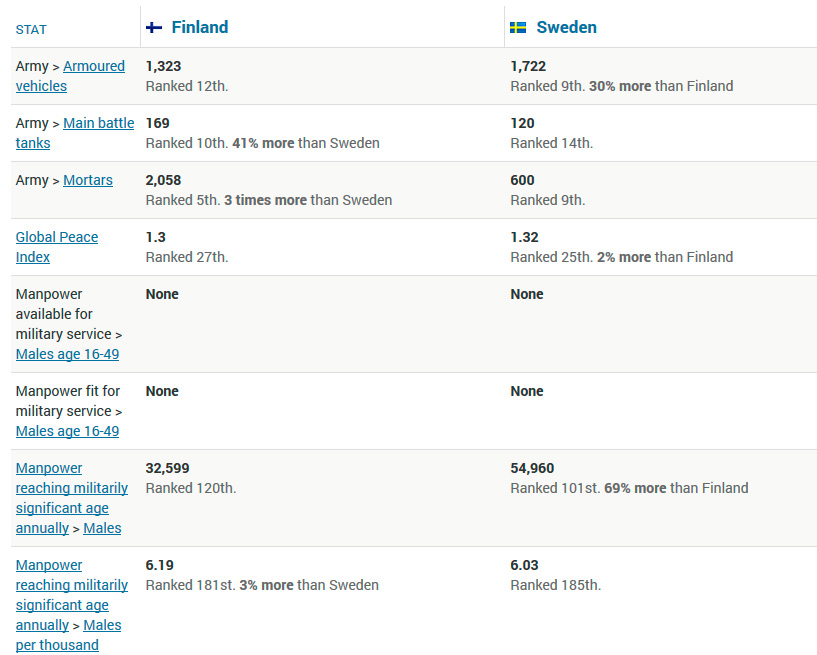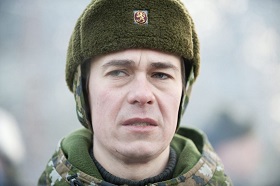The joint initiative of the Scandinavian and Finnish defense ministers to strengthen military ties with the Baltic countries and overall regional security is a very serious matter. It would appear to be a huge mistake to regard this idea as new or innovative, as well as to link the issue to Ukraine. An additional mistake lies in adopting a facile approach to the military and political capacity of a potential alliance. And we need to forget the fact that in the Northern and Baltic countries, defense ministers play mostly a technical role in the elaboration of national security policies.
As a matter of fact, we are facing yet another attempt to reshape the European political space, this time on its northern flank. Slightly more than a century ago, the international order in the Europe’s north and in the Baltic was regulated by the St. Petersburg Declaration on the Baltic signed by Russia, Germany, Sweden and Denmark, which established mutual commitments from the regional leaders to maintain the territorial and political status quo and strengthen “the ties of good neighborhood and friendship.” [1]. Although the Baltic Declaration carried the signatures of four states, the contemporaries very well understood that the Russian and German empires, the two great powers, were the handlers of the fate of Northern Europe.
Between the two world wars, new independent states emerged in the Baltic, i.e. Finland, Poland, Estonia, Latvia and Lithuania, which gave rise to diverse defense blocs. Estonia proposed an alliance to Finland, and Finland – to Sweden, while later more sophisticated schemes popped up and were partially materialized, for example one bringing together Poland, Lithuania, Latvia and Estonia. In the early 1920s, the Baltic political elite placed its security bets on the Baltic Union, which was thought to trigger economic, cultural and military-political cooperation between the newly independent Finland, Poland, Estonia, Latvia and Lithuania. The Balts hoped that the Baltic Union in the eastern Baltic would later incorporate the Scandinavian countries but the latter cold-shouldered the idea. The only outcome of the Baltic Union can be found in the late 1923 defense agreement between Estonia and Latvia, which however turned absolutely useless in terms of security. After Adolf Hitler came to power, in September 1934 the Baltic countries set up the Baltic Entente based on the Treaty of Understanding and Collaboration between Estonia, Latvia and Lithuania. Formally effective over 10 years, the Baltic Entente envisaged close cooperation between the signees on the principles of the League of Nations, and the coordination of their foreign policy approaches through regular meetings of foreign ministers. However, the Baltic elites never managed to agree on military cooperation.
All in all, there were at least eight tentative regional defense alliances with varied configurations, although practical military cooperation was only superficial, as was the case of Latvian-Estonian defense treaty, or sometimes secret, as seen from intensive military interaction of Estonia and Finland with no treaty signed. According to well-known historian Jari Leskinen, in the early 1930s the Finnish and Estonian top brass developed a plan for overall artillery and mine coverage of the Gulf of Finland along the Naisaar-Makilouto line. “Joint plans of the Finnish and Estonian fleets reached a stage when in case of war, Estonian submarines would become part of the Finnish Navy and operate under the Finnish command.” [2]
The interwar period coined the term Baltoscandia that implied a concept for consolidating the geopolitical space of Scandinavian countries, Finland and the Baltic. The notion was introduced by Swedish geographer Sten de Geer to describe the region composed of the three Scandinavian kingdoms and four Baltic states that emerged out of the Russian Empire. In his 1942 book “The Confederation of Baltoscandia”, Lithuanian geographer Kazys Pakstas offered a systemic analysis of the region as a single cultural and geopolitical space, suggesting that Sweden should play the key role in the establishment of the Scandinavian-Baltic community [3].
One of the causes for the failure of the Baltic-Scandinavian interwar projects definitely can be found in the differently directed development tracks of statehood on the opposite coasts of the Baltic Sea. While the Baltic states and Poland were building hardboiled authoritarian regimes, the Scandinavians chose the democratic and parliamentarian path, laying the foundation for a social state, a home for the people.
After World War II, the Baltic and Scandinavians found themselves on opposite sides of the barricades of the Cold War. When the Baltic became part of the USSR, the North Europeans had to seek new foreign policies. World War II only underlined their military vulnerability and daydreaming of staying out of conflicts between the two superpowers. As a result, in 1948 Sweden attempted to entice its North European neighbors with the idea of a Scandinavian Defense Union based on collective security and noninterference in the conflicts between superpowers, which reflected the neutralist sentiments predominant in Scandinavia. But Denmark and Norway, still fearful of a repeat loss of sovereignty, preferred to join the militarily and politically powerful NATO, although with reservations, like the ban on the deployment of foreign troops and bases on their territory in peacetime, and later an extension to a ban on nuclear weapons.
Finally, Northern Europe acquired a security configuration known as northern balance. The military engagement between Denmark and Norway with NATO was compensated by expanded cooperation between the Soviet Union and neutral Finland, with Sweden also remaining nonaligned, so that the north of Europe happened to become the quietest theater of the Cold War.
Back to current events, the circulation of reports on trans-Baltic military cooperation seems to be of use to almost all regional actors, irrespective of its prospects of materializing. The situation is as follows.
Finland has a thriving defense sector, although unlike Sweden with no aircraft construction capacity. Helsinki has always been extremely cautious in its policy towards Moscow, especially since the historical grounds are quite spectacular. Everyone is aware of the virtues of the Paasikivi-Kekkonen line, while Finland surpasses all other North European and Baltic countries in the scale of its economic relations with Russia. At the same time, the debate on NATO membership has been going on in Finland for over 20 years.
Notably, April 19 in Finland is the day of parliamentary elections, only enriching the NATO issue with an electoral flavor. Defense Minister Carl Haglund, an ethnic Swede, is the leader of the Swedish People’s Party, which is gradually losing supporters. As such, the Swedish minority and its party in Finland are quite influential, which seems more significant than the number of parliamentary seats won. The party is a member of the Alliance of Liberals and Democrats for Europe in the European Parliament, where Haglund used to be a deputy. In fact, this is a conduit for Finland toward NATO. Taking into account public sentiments, Finland’s right-wingers and centrists have to consider the country’s accession to NATO in the historical perspective rather than in relation to the current needs. Notably, “Finland’s presidential office was puzzled by the Northern defense ministers’ article about the Russian threat”. At the same time, it offers an opportunity for the government to adjust the equilibrium point in the Russian-Finnish dialogue.
Norway is a NATO stalwart with many cold warriors happy to transmit the gift to their inheritors. On October 30 of last year, Norwegian ex-foreign minister Thorvald Stoltenberg, father of NATO Secretary General Jens Stoltenberg, addressed the 66th session of the Northern Council, which unites legislators of Denmark, Norway, Finland and Sweden, and proposed establishing a Nordic Defense and Security Commission. And in past decades, the eastern track has been Oslo’s biggest success.
Sweden has evaded conflict for 200 years and has been known for its demonstratively peaceful foreign policy, at least before 2014. However, its armed forces are quite strong, inferior to Finland in strength but not in quality. Sweden’s army, the navy and even air force are equipped with high-tech hardware, while the defense industry obviously matches that of any major European country.
Some of Swedish politicians, mainly in the center and right-of-center segments, regard the defense sector as the locomotive of the national economy, especially since in 2014, sales were on an upward curve. Swedish neutrality is also known for its tradition of selling weapons before, during and after all wars of the 20th century. Hence, the search for Russian submarines in the Stockholm subway seems hardly a historical complex but rather a pragmatic economic calculus. In May 2014, Swedish and Finnish defense ministers announced the signing of a bilateral plan for defense cooperation providing for joint air force, army and navy exercises. Mr. Haglund said it was a pathway to a Swedish-Finnish defense alliance that is seen by certain Finnish politicians and commanders as an alternative to NATO membership.
The Baltic states perceive the northern vector of defense cooperation as a kind of rehabilitation of their politics. Anti-Russian statements by Estonian and Lithuanian presidents, as well as those by the Latvian foreign minister, are increasingly puzzling both for the Baltic populations and European politicians unwilling to escalate the Russia conflict and fuel the personal ambitions of former U.S. media anchorpersons and graduates of Soviet communist party schools. Under these conditions, military-political integration with more stable and efficient countries appears quite attractive.
As for Russia, it should painstakingly review the entire range of new and potentially detrimental threats stretching from the borders of Belarus to Svalbard and from the Canadian Arctic Archipelago to the Narva River. Russia’s neighbors and partners must know that their plans and, a fortiori, actions will not remain unheeded. Judging by a recent statement of Jarmo Lindberg, Commander of the Finnish Defense Forces, many are aware of this fact. “Russia has so far done nothing to generate a threat to Finland in the near future”, he said on this April 11.
We fully agree with Finnish Prime Minister Alexander Stubb, who on April 12 stated that Finland is making its own security and foreign policy decisions. And Russia is entitled to the same right.
[1]. Declaration and Memorandum of Russia, Germany, Denmark and Sweden on the Baltic, April 10(23) 1908 // World Wars of the 20th Century. Book 2. World War I. Documents and Materials. Moscow, 2002. P. 25.
[2]. Lеskinen J. The silenced bridge of Finland Secret military cooperation between Finland and Estonian against the Soviet Union 1930—1939 // Russia and Finland in the 20th Century. St. Petersburg - Liechtenstein 1997 p. 124
[3]. The Baltic Region. Conflicts and Cooperation. Euroülikool, 2000. p. 82.







